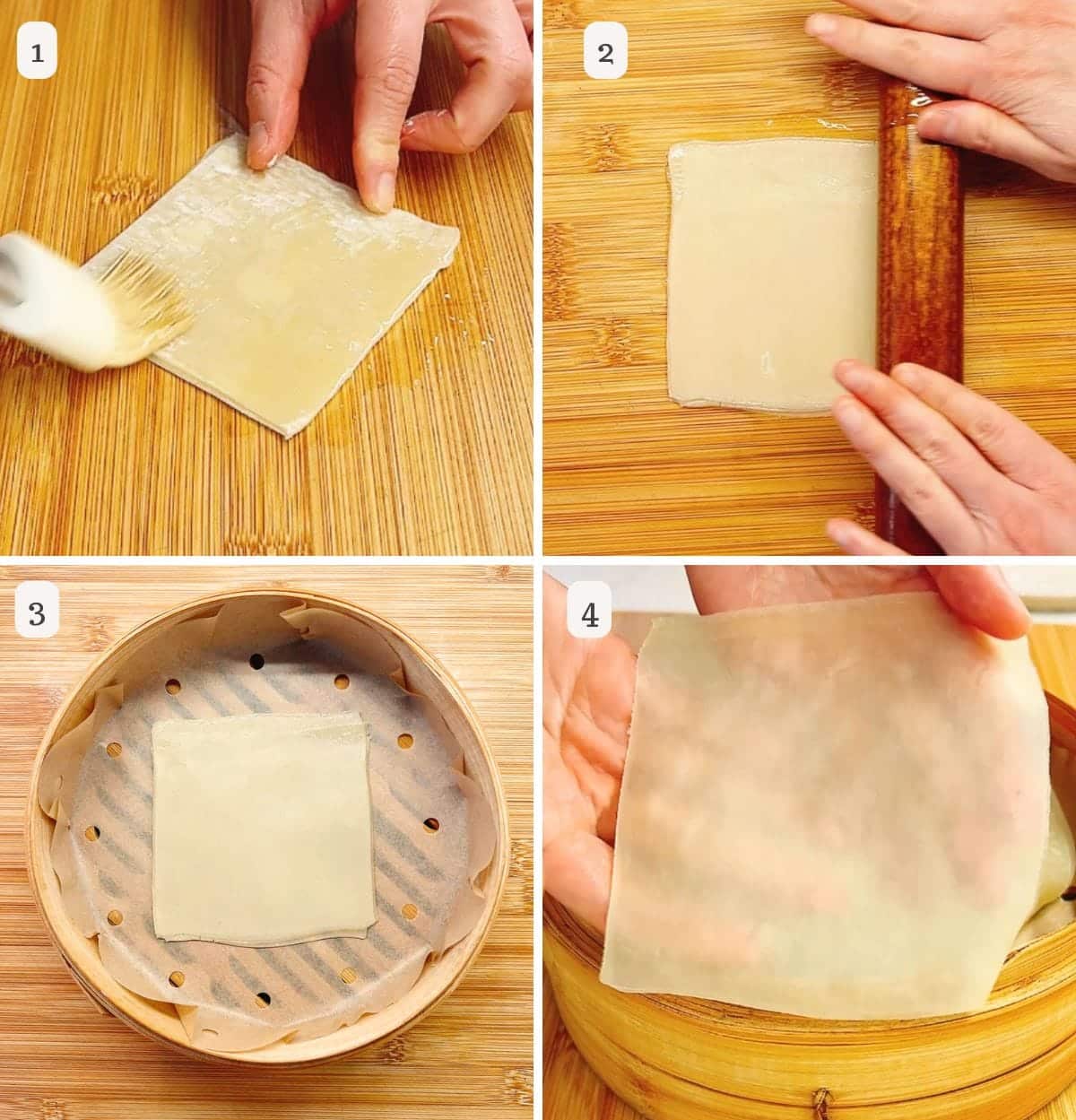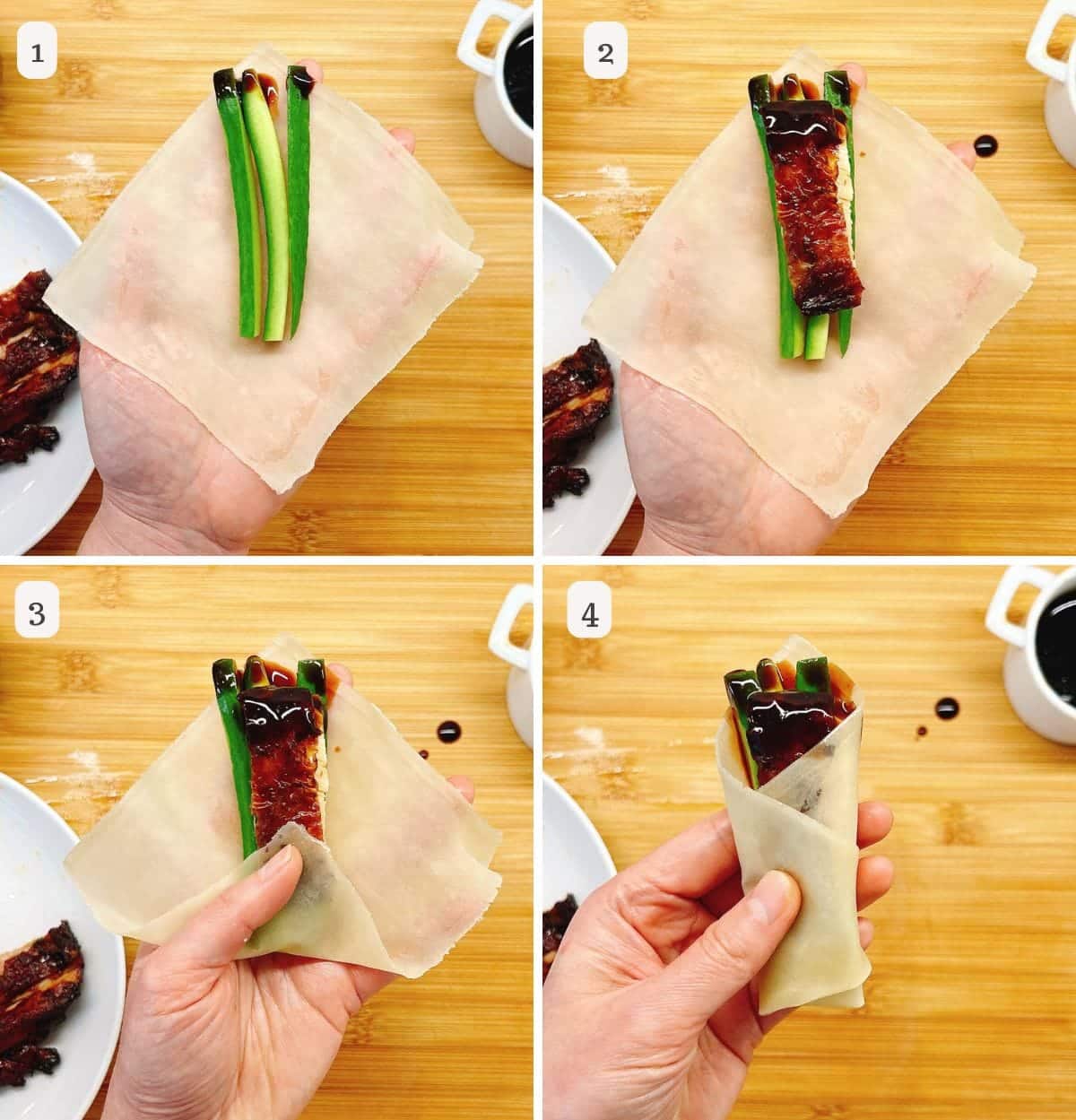Taiwanese soy chicken marinade recipe
This Taiwanese soy chicken marinade makes the juiciest, most flavorful chicken—perfect for weeknights, no extra sauce needed.
Servings: 4 pieces
Ingredients
- 5 tbsp Taiwanese thick soy sauce or store-bought Kimlan or Yunhai
- 4 pieces chicken thighs skin-on & boneless
Optional serving ideas:
- Cooked rice for rice
- Vegetable side dish for rice
- 8-12 pieces wonton wrappers room temperature (for wraps)
- Avocado oil or neutral-flavored oil (for wraps)
- 1-2 whole Persian cucumbers for wraps
Instructions
- To make Taiwanese thick soy sauce, combine light and dark soy sauces, water, mirin, coconut sugar, black vinegar, garlic granules, sea salt, and five-spice powder in a pot. Simmer 5–6 minutes, stirring until sugar dissolves. Whisk in a glutinous rice flour slurry and cook 1–2 minutes until slightly thickened. Cool to thicken further; it should coat a spoon.
- Tender chicken: Make a few shallow cuts on the meaty side of the chicken thighs to help break up the connective tissue. This will help the chicken lay flat, absorb more marinade, and cook more evenly.
- Marinate chicken: Place the chicken in a large container and pour in the thick soy sauce. Toss to coat so every piece is well covered on both sides.
- Marinating time: Let the chicken marinate in the fridge for at least 2 hours, or up to 24 hours.
- Air fry: Lightly shake off the extra marinade. Place the chicken skin-side up in a lined air fryer basket. Air fry at 380°F (193°C) for 14 minutes. No flipping needed.
- Oven-baked: Brush a wire rack with a little oil. Place the chicken skin-side up on the rack and bake at 425°F (218°C) for 20 minutes. For crispier skin, switch to high broil for 2–3 minutes at the end—just keep an eye on it so it doesn’t burn.
- Check doneness: Use a digital thermometer and check the thickest part. It should read at least 165°F (74°C).
- Serving: Because the soy marinade is very flavorful, you do not need extra sauce to serve on the side. Simply slice the chicken and serve hot or warm with rice and a side vegetable of your choice. For the wonton wrap version, see the notes below.
Video
Notes
- Using skinless chicken thighs: You can also use skinless, boneless thighs. Air fry for 10 minutes instead of 14, then check and add a little more time if needed.
- What is Taiwanese thick soy sauce (醬油膏)? It’s a savory-sweet soy sauce that’s thickened with flour (or starch) and used often in Taiwanese home cooking for marinades and dipping sauces. The flavor is garlicky and slightly sweet, with a hint of five-spice warmth.
- Click here to see my homemade thick soy sauce with storage and usage info.
- How long should you marinate the chicken? Because the Taiwanese thick soy sauce is already rich and concentrated, I don’t recommend marinating the chicken for more than 24 hours. Around 12 to 24 hours is perfect—it gives you beautifully caramelized, golden-brown chicken that’s savory, sweet, and garlicky without becoming too salty or overpowering.
- Large-batch meal prep (freezer-friendly): For freezer meal prep, you can marinate the chicken in advance, but I recommend diluting the sauce to avoid over-salting. Add 2 tablespoons of water for every 5 tablespoons of thick soy sauce. This way, you can freeze the chicken for up to 3 months without losing flavor or making it too salty.
- To serve with Chinese pancakes (Beijing duck style):

- Let the wonton wrappers come to room temperature so they soften slightly—this makes them easier to roll and less likely to tear.
- Take one wrapper and lightly brush the surface with oil. Stack a second wrapper on top and brush again. Repeat with up to 4 wrappers, brushing between each layer. Leave the very top layer dry.
- Use a rolling pin to gently roll the stack outwards in all directions. Aim for roughly 4 to 4.5-inch square sheets. Don’t press too hard—slow and even pressure helps prevent tearing.
- Bring water to a boil and line your bamboo steamer with a perforated parchment sheet. Steam the wrapper stack over medium-low heat for 10 minutes.
- Carefully remove the stack and gently separate the layers one by one. Keep them warm and moist by storing them in the steamer or covering them with a clean, damp cloth.
- To wrap: Add 2 slices of chicken and a few cucumber spears to each wrapper. Fold from the bottom up, then tuck in the left and right sides like a half-open envelope. Add a little water to help seal if needed, but this is meant to be eaten fresh—just like Beijing duck.

- Extra tips:
- Store leftover steamed wrappers in the bamboo steamer to keep them from drying out.
- Fresh wonton wrappers roll and steam the best. Frozen ones work, but once re-frozen and thawed again, they’re much harder to stretch and often tear while rolling.
Nutrition
Serving: 1piece | Calories: 32kcal | Carbohydrates: 6g | Protein: 1g | Fat: 0.2g | Saturated Fat: 0.1g | Polyunsaturated Fat: 0.1g | Monounsaturated Fat: 0.1g | Cholesterol: 1mg | Sodium: 611mg | Potassium: 36mg | Fiber: 0.3g | Sugar: 4g | Vitamin A: 1IU | Calcium: 0.1mg | Iron: 0.3mg
